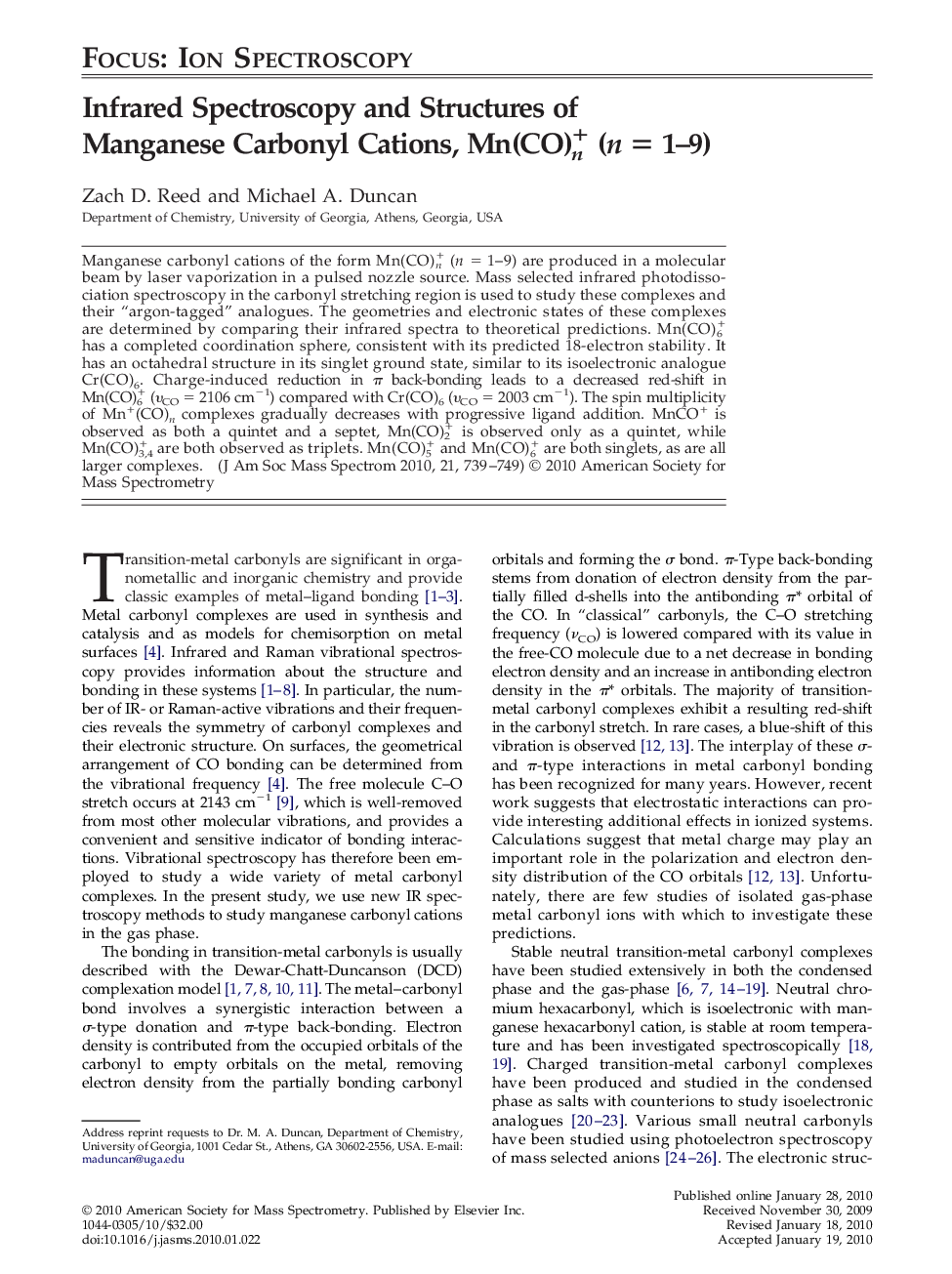| Article ID | Journal | Published Year | Pages | File Type |
|---|---|---|---|---|
| 1195135 | Journal of the American Society for Mass Spectrometry | 2010 | 11 Pages |
Manganese carbonyl cations of the form Mn(CO)n+ (n = 1–9) are produced in a molecular beam by laser vaporization in a pulsed nozzle source. Mass selected infrared photodissociation spectroscopy in the carbonyl stretching region is used to study these complexes and their “argon-tagged” analogues. The geometries and electronic states of these complexes are determined by comparing their infrared spectra to theoretical predictions. Mn(CO)6+ has a completed coordination sphere, consistent with its predicted 18-electron stability. It has an octahedral structure in its singlet ground state, similar to its isoelectronic analogue Cr(CO)6. Charge-induced reduction in π back-bonding leads to a decreased red-shift in Mn(CO)6+ (υCO = 2106 cm−1) compared with Cr(CO)6 (υCO = 2003 cm−1). The spin multiplicity of Mn+(CO)n complexes gradually decreases with progressive ligand addition. MnCO+ is observed as both a quintet and a septet, Mn(CO)2+ is observed only as a quintet, while Mn(CO)3,4+ are both observed as triplets. Mn(CO)5+ and Mn(CO)6+ are both singlets, as are all larger complexes.
Graphical AbstractInfrared spectroscopy of mass-selected ions provides new insights into metal carbonyl structure and bonding.Figure optionsDownload full-size imageDownload high-quality image (91 K)Download as PowerPoint slide
